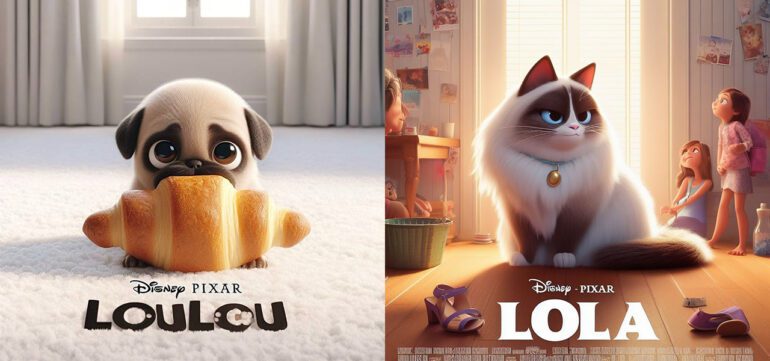TL;DR:
- Disney raised concerns over Microsoft’s Bing AI generating trademark-infringing Disney-Pixar logos in user-generated content.
- Microsoft initially blocked the term “Disney” but later reinstated it with some tweaks.
- Microsoft acknowledges variability in AI-generated images and allows requests to limit brand-associated content.
- The emergence of the “Offensive AI Pixar” meme poses a more significant challenge for trademark protection.
- AI technology’s role in producing offensive parodies highlights the need for copyright protection in the digital age.
Main AI News:
The convergence of artificial intelligence and creativity has raised some legal eyebrows in recent times, and one of the latest skirmishes has involved two giants in their respective fields: Disney and Microsoft. The issue revolves around the unauthorized use of Disney’s iconic trademarks and imagery through Microsoft’s Bing AI imaging tool.
A Social Media Trend Gone Awry
The trouble began with a social media trend that saw users prompt Bing’s AI tool to generate images of pets in a “Pixar” style. While the concept of generating Pixar-style characters seemed harmless, it took an unexpected turn when the Bing AI started producing images that included Disney-Pixar logos. This raised a red flag for Disney, which swiftly sought action from Microsoft.
Disney’s Legal Gambit
In response to Disney’s concerns, the tech behemoth took swift action by blocking the term “Disney” from its image generator, which relies on DALL-E 3 technology. After some adjustments, Microsoft reinstated the prompt, but the question remains: has it done enough to address Disney’s trademark infringement worries?
Microsoft’s Response
According to Microsoft, there is still a degree of variability in the AI-generated images, which may yield different results from time to time as they fine-tune their safety systems. Additionally, the company has allowed artists, celebrities, and organizations to request limitations on the creation of images associated with their names and brands.
The ‘Offensive AI Pixar’ Conundrum
However, the more pressing issue for Disney is the emergence of the “Offensive AI Pixar” meme. In this meme, Bing users create offensive film ideas in a generic computer-generated style reminiscent of Pixar films. Unlike the previous trend, shutting this down proves to be far more challenging. It’s highly likely that the Bing Image Creator has already been trained on copyrighted Disney and Pixar artwork. Furthermore, users are manually adding text and Disney-Pixar logos after the central image is generated, further complicating matters.
AI’s Role in Trademark Infringement
The proliferation of offensive Disney and Pixar parodies on the internet is not a new phenomenon, but AI technology has amplified the problem exponentially. Anyone can now generate such content within seconds, without the need for artistic skill. This trend raises important questions about the responsibility of AI systems in preventing the theft of intellectual property owned by others. Unfortunately, there’s no immediate solution in sight for Disney or other trademark holders looking to curb the misuse of their brands in the age of AI-generated content. The battle between creativity and copyright protection continues to evolve in this brave new world of artificial intelligence.
Conclusion:
The clash between Disney and Microsoft over trademark infringement in AI-generated content underscores the evolving landscape of intellectual property protection in the era of artificial intelligence. As AI continues to enable the rapid creation of potentially infringing material, businesses and content creators must remain vigilant in safeguarding their brands and trademarks.

